As the rhetoric between Washington and Pyongyang has heated up, so has the risk to the United States. Recent missile and nuclear tests by the North Korean regime have made it clear that they are closer to their long-stated goal of attacking the United States than ever.
After their sixth nuclear test, in which they exploded what was supposed to be a two-stage hydrogen bomb, the North Korean news agency started talking about an EMP (electromagnetic pulse) attack against the United States for the first time.
What’s next for us? A totally off-grid world, where the survival of the fittest would become effective?
In a way, it’s surprising it’s taken them this long, considering how long I and others have been warning about that possibility.
Any county that is smart enough to develop nuclear bombs and intercontinental ballistic missiles (ICBM) has to have people in their war plans department who are aware of how effective an EMP is and who would be punching the numbers to figure out how to use their nuclear arsenal in that regard.
An EMP attack doesn’t preclude the possibility of conventional nuclear war and we shouldn’t assume that it will. Regardless of the flaming rhetoric coming out of Kim Jong-un and his Secretary of State, they have to realize that they can’t win a nuclear exchange with the United States.
No matter how effective they are, we have way more nukes than they do.
Even if they are able to take out Washington, a few other major cities and our entire electrical grid in one coordinated attack, we have more than enough nuclear missiles in submarines and nuclear bombs on aircraft carriers to turn their entire country into a parking lot.
But don’t think that will deter them from this course of action. This is a grudge match for them, wanting to get even with us for the first Korean War.
Based on that grudge, the North Korean government is bent on destruction and the people of that small country are willing to die in support of their leadership. If anything, that increases the likelihood for a combined EMP and conventional nuclear attack. They want to punish us and they want to punish us good.
Should that happen, our chances of surviving the attack unscathed are minimal. While we do have some anti-ICBM defense, there aren’t enough, especially not for a southern approach. So, the best we can hope for is that North Korea destroys a few cities; the worst is an effective EMP.
That’s the scenario we have to prepare for; an EMP taking out our electrical grid and turning the clock back 150 years or so, technologically speaking. The possibility of us surviving any sort of nuclear exchange, unscathed, is minimal.
The Worst Scenario
This is the worst possible scenario we face today; and it is not one that we can ignore. While I will be absolutely thrilled if our missile defenses are able to neutralize such an attack, I don’t believe that it is something we can count on.
With that being the case, you and I need to be ready to survive in a post-EMP world; one in which we don’t have electrical power; one which most people are unprepared to live in. According to the reports of the EMP Commission, as much as 90% of the US population will die of starvation. That sort of world. Somehow, we’re not only going to have to survive in it, but rebuild as much of our lives as we can.
This is why we are preppers; in order to ensure our family’s survival in the case of such an event. Everything we do is ultimately for this reason. But that isn’t enough. If all we do is ensure our own survival, what about our kids? Our grandkids? The human race in general.
That’s why it’s going to be important to be able to rebuild as much of society as possible. Then, and only then, will we be able to guarantee the survival of our children and grandchildren. That’s going to require the right sorts of skills, many of which aren’t common today.
Fortunately, there is still time. So if you don’t already have the right sorts of skills, you could at least try to learn some of them. There’s no way that anyone could possibly learn all of them, but the more that you can learn, the more valuable you will be in that post-EMP world. Perhaps you could be valuable enough that others would help to guarantee your survival and that of your family.
Of course, you’ll want to get something for your skills. That means turning those skills into some sort of business; a business where you can produce a product or provide a service to people who will be struggling to survive and rebuild their lives.
Valuable Businesses in a Post-EMP World
Any business you attempt to build for that post-EMP world will have to operate under the assumption that you won’t have any electrical power available to you, other than that which you produce yourself.
So, one of the things you may want to consider, as part of starting your off-grid business, is making sure that you can produce enough electricity to meet your basic needs, both in your home and in your business.
Other than that, plan on using hand tools, rather than electric ones. In fact, I’d go so far as to say that you should make or buy the necessary tools now, because you probably won’t be able to find them when the time comes. Besides, getting them now gives you the chance to learn how to use them effectively.
Growing Food
The biggest need that most people will have is for food. According to the EMP commission’s report, the vast majority of the people who will die after an EMP, will do so from starvation. The vast majority of the farms in our country are owned by giant corporations and grow food (mostly grain) in bulk.
Without fuel for the farm machinery, those farms won’t be able to operate. Without fuel for trucks, that food can’t be hauled to processing plants. Without electricity to run the plants, the raw food can’t be turned into packaged foods.
All food production will have to be local. Local farmers will do well, assuming they can get fuel for their tractors and combines. That will be the problem.
Likewise, local ranchers and shepherds will find themselves sitting on a goldmine, with people needing the food that they can produce. The ability to grow food may very well be necessary for your family’s survival. Growing more than you need will give you the opportunity to trade food for other essentials.
Charging Batteries
As a society, we are addicted to our electronics. While most of those will be destroyed, there is a good chance that small portable electronics will survive if protected in a Faraday cage. These will become like gold, as people try to cling to the pre-EMP past.
If you are putting in alternate energy for your home anyway, you could offer battery charging services to friends and neighbors. Solar panels will actually survive an EMP, with a loss of only 5 to 10 percent of their efficiency. However, the solar charge controller and voltage inverter for your system will probably be fried by the EMP; so make sure you have a spare.
Herbal Medicine
The current pharmaceutical industry will collapse, as will many other industries. This means that the only medicines any community will have will be those in people’s homes and in local pharmacies. When those run out, there won’t be any replacements.
However, modern medicine is an outgrowth of herbal medicine. Quite literally, all medicines started out as plant products. Big Pharma has synthesized the chemicals found in those plants, in order to make medicines which they could patent and sell.

Knowing which plants offer which medicinal properties and growing those plants could allow you to open up a post-EMP natural pharmacy, providing medicines to your local community.
Of course, you’ll need to educate the doctors, some of who will resent you. But the truly smart ones, who care about their patients, will take knowledge wherever they can get it.
Blacksmithing
Before the industrial revelation took over from them, most metal products were the handicrafts of some blacksmith. They made everything from tools to nails, with andirons in between. But they were one of the earliest casualties of the industrial revolution. Factories took over much of what they made and then cars took over from horses, eliminating the need for shoeing.
While there will be many tools and other metal objects laying around in the post-EMP world, there won’t be the old kinds of tools that people need for working with their hands. Blacksmiths may very well find themselves in a crucial place once again, helping to rebuild society.
Building Trades
While the EMP itself won’t damage homes, factories, stores and other businesses, it will make some drastic changes to society. People will find themselves needing to build outbuildings behind their homes, for their home-based business.
Others will need to change their plumbing, so that it will work off a well. There will always be a need for the building trades.
Taking this a step further, linemen for the phone or electric company will probably find gainful employment trying to put together local phone systems, build small hydroelectric dams and otherwise help rebuild society.
The skills these people have will become an important part of rebuilding.
Practical Engineering
When I say “practical engineering” I’m not talking about someone who can design a computer chip, but rather someone who can design simple devices, of the type that we will need to have, in order to rebuild our lives. Designing a loom for weaving fabric will be important, designing a computer won’t.
These people may not even be working as engineers right now, or might be considered technicians in business and industry. But they know how to put things together that will work. If we are going to have to rebuild turbines to create power, we’ll need people who can do the job from the ground up, starting by melting down the copper and drawing wire.
Another important characteristic of the type of engineer I’m talking about is the ability to repurpose items and turn them into something useful. Without gasoline, we won’t have much use for cars and trucks, but the axle from that truck might be very useful in building a wagon. That’s the sort of engineering we’re going to need.
Mechanics
While most vehicles will be off the road, due to a shortage of gasoline, there will be some that are running. We will need mechanics not only to fix those vehicles, but to find ways of making others run, ways of modifying engines so that alternate fuels can be burned, and taking engines out of cars to be used as power sources for other things.
Good mechanics, especially good shade-tree mechanics, understand the engines they work on, better than the engineers that designed them. This knowledge gives them the ability to modify those engines in a number of ways, such as increasing the power they produce.
I’m betting that if we get mobile after the attack, it will be because of mechanics that come up with some breakthrough new ways to use the internal combustion engine.
Making Bio-Diesel & Methane
Two of the most promising fuels sources in a post-EMP world would be bio-diesel and methane gas. While there are few cars on the roads today which burn these fuels, it is possible to modify some engines to burn them.
As these two fuels are some of the easiest to produce, requiring the least amount of equipment, this could very well turn into an effective business.
General Repairs
Like mechanics, people who can repair other things will have a ready business in a post-EMP world. There will be a need for repairing just about anything, as the factories will be closed and production will come to a standstill. All we will have is what we have at the moment the attack happens.
These people will also be likely to be the ones who work together with the practical engineers to create new things or reinvent old ones. In many cases, the materials to make those tools and equipment will come from cannibalizing existing machinery, appliances and other things that no longer work. Gears and pulleys don’t care what they’re working in, they’ll still do the job.
Gunsmithing
It is widely believed that a post-EMP world will be violent, due to a breakdown of society. As such, people will need their guns, and those guns will probably get a lot more use than they do today. Guns that get used stand a chance of getting broke. Hence, the need for good gunsmiths.
For that matter, the ability to make ammunition will probably become a high priority, especially with people trying to hunt for food. Anyone with a reloading press and the appropriate dies could have a ready-made business, without any further investment.
Make Sure You’re Prepared!
Most of the businesses I’ve mentioned will require some sort of materials and supplies. Gunsmiths won’t be able to go online and order gun parts, nor will blacksmiths be able to pick up steel at their local steel supply. In both cases, the craftsmen will either need to make their own materials or find a way of reusing materials that currently exist.
Don’t count on local warehouses having what you need either. They’ll probably have enough at the beginning, but those supplies will eventually run out. When that happens, you’ll need to have a Plan B that you can put into effect. That plan may require you making things yourself.
What I’m trying to say here is that you need to think through thoroughly any off-grid business that you try to create. Don’t think of it in terms of today’s world, but in a world where you won’t be able to just buy the parts and materials you need. How will you get them? Can you scavange? Can you find the raw materials in nature? Can you repurpose old stuff, melting it down to make new stuff again?

This article has been written by Bill White for Survivopedia.
from Survivopedia
Don't forget to visit the store and pick up some gear at
The COR Outfitters. How prepared are you for emergencies?
#SurvivalFirestarter #SurvivalBugOutBackpack #PrepperSurvivalPack #SHTFGear #SHTFBag

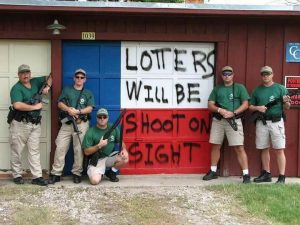



 Also, there are some places where going cheap is beyond foolish. Medical kits and supplies are one of those, as are
Also, there are some places where going cheap is beyond foolish. Medical kits and supplies are one of those, as are 





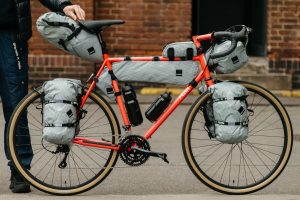




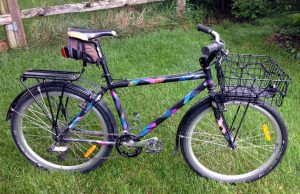

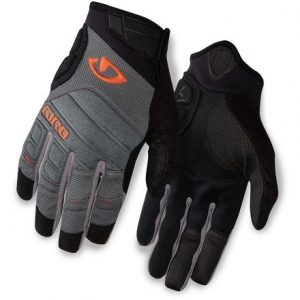
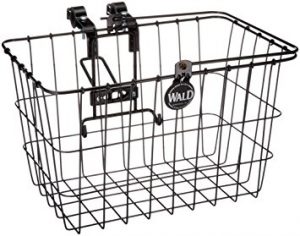
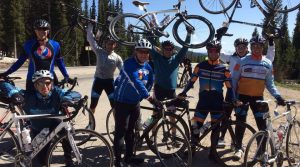
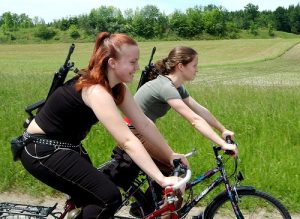
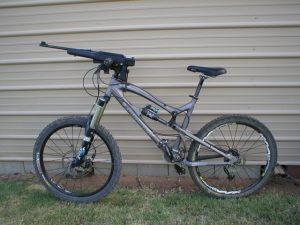
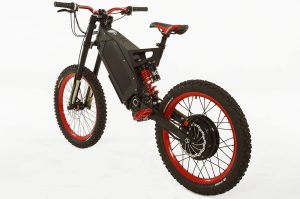 a mere $10,000 will get you
a mere $10,000 will get you 

 As seniors, having enough meds is of bigger concern because often the medications that you take are quite literally life-preserving. The good news is that there are some natural alternatives to some medications.
As seniors, having enough meds is of bigger concern because often the medications that you take are quite literally life-preserving. The good news is that there are some natural alternatives to some medications. High blood pressure is one disease that is largely avoidable by practicing a healthy lifestyle. It’s one of the few diseases you can actually get rid of, too. In some cases, though, it’s genetic and you’re just going to have to deal with it. There are several natural approaches to controlling your blood pressure:
High blood pressure is one disease that is largely avoidable by practicing a healthy lifestyle. It’s one of the few diseases you can actually get rid of, too. In some cases, though, it’s genetic and you’re just going to have to deal with it. There are several natural approaches to controlling your blood pressure: